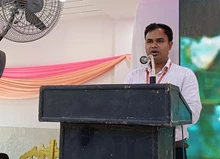
The agricultural systems of our ancestors provide the foundation for current and future agricultural innovations and technologies. These systems, rich in cultural, ecological, and agricultural diversity, are still evident in many parts of the world. They have been preserved as unique agricultural practices but face numerous threats, including climate change and competition for natural resources.
Migration due to low economic viability has led to the abandonment of traditional farming practices, resulting in the loss of endemic species and breeds. The "Globally Important Agricultural Heritage Systems" (GIAHS) program, led by the UN FAO, recognizes and helps mitigate these threats by identifying and preserving these critical agricultural landscapes.
What is GIAHS?
The "Globally Important Agricultural Heritage Systems" (GIAHS) are remarkable landscapes that combine agricultural biodiversity, resilient ecosystems, and culturally significant assets. Situated at specific locations worldwide, they provide sustainable food and livelihoods for millions of small-scale farmers, along with a variety of goods and services.
The FAO has classified 72 systems across 23 countries as GIAHS sites since its inception in 2005. In the Asia and Pacific region alone, 57 agriculture heritage systems have been designated across eight countries and one territory. India, with its rich agricultural history, is home to three such significant sites: the Saffron Heritage of Kashmir, the Kuttanad Below Sea Level Farming System and the Koraput Traditional Agriculture. Each of these sites showcases the unique agricultural practices and cultural heritage that have been maintained over centuries.
1.Saffron Heritage of Kashmir
Saffron cultivation in Kashmir dates back to the 5th century B.C. and continues to play a vital role in the region's agricultural economy. As an annual crop, saffron serves as a significant cash crop, with only 1 percent of saffron growers relying on any other form of agriculture. This cultivation is deeply embedded in the cultural heritage of Kashmir, tied to its renowned cuisine, medicinal uses, and rich traditions. The knowledge and skills required for saffron cultivation are primarily preserved and passed down by Kashmiri women, who are the custodians of this valuable heritage.
However, the sustainability and livelihood security of saffron cultivation are under severe threat. Challenges such as water scarcity, productivity loss, and market volatility necessitate the adoption of appropriate technologies to ensure the continued viability of this ancient practice. Addressing these issues is crucial for preserving both the cultural and economic significance of saffron in Kashmir.
2.Kuttanad Below Sea Level Farming System
The Kuttanad Wetland Agriculture System in India stands out as the only system in the country that supports rice cultivation below sea level. This unique practice involves creating arable land by draining delta swamps in brackish waters. The Kuttanad system is a mosaic of fragmented agricultural landscapes, comprising wetlands used for paddy cultivation and fish catching, garden lands for coconut, tubers, and food crops, and water areas for inland fishing and shell harvesting. The creation of wetlands through the construction of polders and dewatering is a distinctive feature of this system.
Kuttanad faces severe challenges, including water pollution from tourism and chemical use. Protecting this fragile and unique system from external pressures is vital for maintaining its endemic biodiversity and essential ecosystem services. The Kuttanad system serves as an important model for addressing soil availability and flood issues in agriculture, particularly in coastal areas vulnerable to climate impacts.
3.Koraput Traditional Agriculture
The Koraput region in India is known for its traditional agricultural systems, which are closely linked to the local indigenous communities. These communities have conserved a high level of biodiversity through in-situ conservation, preserving numerous endemic species. Despite their invaluable ecological services, the local communities remain among the poorest in the country and the world, with food production often insufficient to meet their needs year-round.
Koraput's traditional farming systems are sustainable and well-integrated with the local environment, playing a crucial role in conserving a rich diversity of about 2,500 species of flowering plants. The cultural practice of maintaining sacred groves serves as an effective method of preserving plant genetic resources, functioning as both a biological heritage and a social mechanism for forest protection with religious significance.
Current threats to Koraput's forest and agrobiodiversity, such as mining and deforestation, underscore the need for recognizing this region as a GIAHS site. Such recognition would help enable rural families to derive economic benefits from their contributions to the conservation of genetic resources. This would also promote social valorization and integration of the local communities, ensuring that their traditional knowledge and practices are preserved and sustained for future generations.
The designation of these sites in India as Globally Important Agricultural Heritage Systems highlights the need to preserve and protect traditional agricultural practices that are rich in biodiversity and cultural heritage.
The GIAHS program plays a critical role in ensuring the sustainability of these systems, providing food and livelihood security for millions of small-scale farmers, and maintaining the invaluable agricultural heritage of India and the world.













